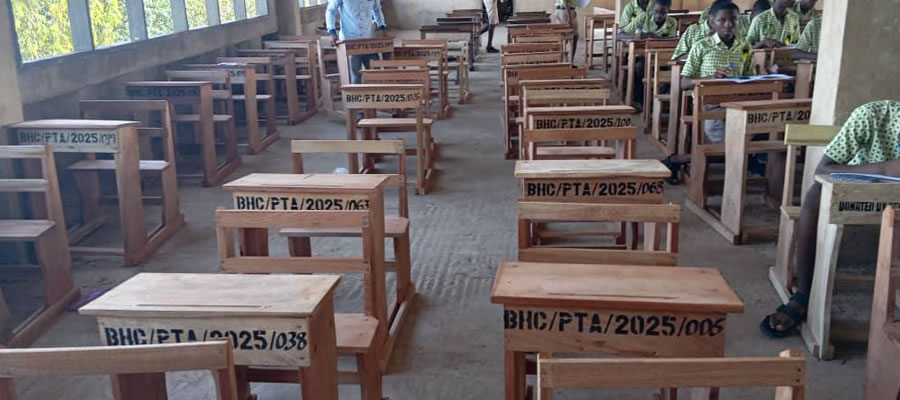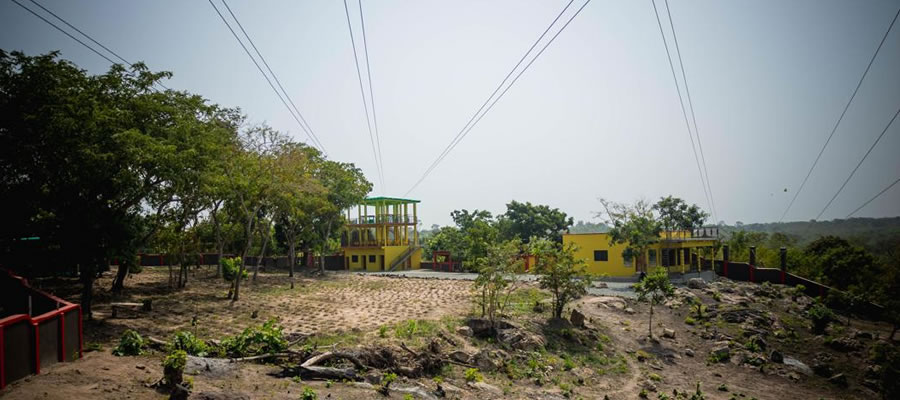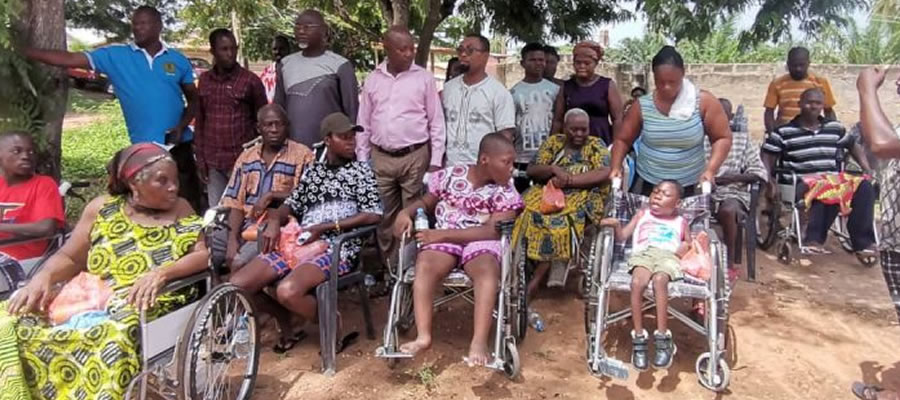

There are 58 kindergartens, 59 Primary Schools, 39 Junior High Schools, 2 Senior High Schools, one Technical Institute and one Vocational School in the Municipality as shown in the table. Generally, there is a considerable improvement in the conditions of educational infrastructure. This was facilitated by intervention from the central Government through transfer of Grants from GET FUND, Capitation Grant and assistance from development partners like DFID,
ENROLLMENT
The Gross Enrolment Ratio (GER) for pre-school in the Municipality was 106.60% while the female GER 103.20% with Pupil – Teacher ratio of 19:1 for public schools and 24:1 for private schools. The level of enrolment rate in 2007/2008 year was as a result of the introduction of capitation grant and the enrolment drive through the PLA activities.
At the primary school level 48.8% of the enrolled children are girls while the boys are 51.2%. The Gross Enrolment Rate at this level is 93.50% with the female GER is 91.40% which is a little lower than the boys GER of 95.50%
Secondary and Vocational School
The Municipality is relatively well served with facilities for secondary education. There are two secondary schools, one technical and one vocational school in the Municipality. These are Bishop Herman College at Kpando, Kpando Secondary School, Kpando Technical Institute and the Sovie Vocational Institute.
Drop-Out Rate
The dropout rate for the district at the primary level is 4.8% with girl being 4.7% and the boys 54%. The Circuit with the most dropout rate are Vakpo 12.8%, Wusuta Botoku 7.9%, and Akpini South 74%. The circuit with the least rate is Akpini Central with 1.7%.
At the JSS level on the other hand, the district drop-out rate is 4.5%. Girls’ drop-out rate is as high as 54% while that of the boys is 4.5%. Akpini south circuit recorded the highest rate of 10% followed by Akpini CentraI 7.3% and Vakpo 5.8%.
The PTR defines the average number of pupils handled by a teacher at each level in the educational system. The outcomes of this analysis help to define the quality of education available as shown in the table below. The table above indicates a general decline in the number of candidates presented at the BECE examination from 2001 to 2004. This may partly be due to the high drop out rate of 4.5% at the J.S.S level. From the performance of the BECE result as shown above for the district indicates that the overall performance was below 50% with the period under review.
Putting the results of the BECE over the year along side the PTR is a paradox that needs to be explained. Whereas the PTR is improving. The degree of the improvement with the BECE result is not commensurate giving an indication that there are some fundamental issue that need to be re-examined.
Classroom infrastructure
The distribution and condition of classrooms throughout the district shows varied levels of needs and attention at the basic level. While some schools have more than classrooms, others do lack. The table below illustrate the classroom situation.
The table above shows the classroom situation in the district. Out of the total classrooms available, 96.7% at the pre-school level, 97.2% at the primary level and 88.9% at the JSS were in use. The total additional classroom requirement at all basic levels is 151 classrooms. The paradox in the table above is that whiles some schools have more classrooms which were not in use, others needed additional classroom. This situation arose as a result of lack of proper co-ordination and collaboration between District Assembly and Non-Governmental Organisations (NGO) on one hand, and District Assembly and communities on the other hand leading to duplication of efforts in the provision of school facilities.
Apart from the availability of the classrooms, the types and condition of the room also present varied pictures. The classrooms are either in cement block, mud wall, sheds or in the open air. Generally, at the pre-school level, only 58.1 % of the classrooms have cement block wall and 19.2 % are in the open air. At the primary level, only 48.1% of the total Classrooms have cement walls, 13.5% are under shed and 16% are housed in old mud walls.
Classifying the classrooms into Good (those that require no immediate attention), Fair (those that require some attention) and Poor (those that require immediate attention), 47%, 33.7% and 37.0% of the classrooms at the pre-school, primary and JSS level respectively are determined to be poor. In the same vein, 22.0% of pre-school, 40.4% of primary schools and 28.0% of JSS classrooms are determined fair. At the JSS level, only 35.0% of the classrooms are good, 25.1 %at the primary and 30.0% for pre-schools are classified as good
Non-Formal Education
Apart from the formal education, the Ministry of Education also provides non-formal education to adults through the Non-Formal Education Division of the Ministry. The activities of the division in the district are focused on promoting functional literacy, providing civic education and in training of people in income generating activities.
Education Support
The Education sector is supported by various interventions in terms of school infrastructure, furniture, teaching and learning materials. The following are some agencies that are currently supporting educational activities in the municipality; PLAN Ghana, IMPACT, TOGETHER Ghana, SUPPORT Ghana and the District Assembly Common Fund.
Sports Development
Sports development in the Municipality is generally low and is centered only on football promotion as a single discipline. The Municipality can boast of one stadium which is used to host most of the sporting events. The current condition of the stadium lacks most of the basic infrastructure to merit a befitting standard. The Municipality can boast of one football club, Kpando Heart of Lions, which plays in the Premier Division and ranks among the best teams in the Country.
Educational sports activities also are pronounced in the Municipality. Apart from Football, there are other disciplines which are athletics, Volley Ball etc, but these are annual events on the academic calendar. There is also the need to promote sports as part of health care promotion if the Municipality is to achieve the health objectives and to enhance unity among its people.
Key Development Problems
• Inadequate educational infrastructure
•Low quality of education expressed in academic performance of schools
• Low enrolment rate
Date Created : 11/21/2017 7:29:17 AM











 facebook
facebook
 twitter
twitter
 Youtube
Youtube
 +233 593 831 280
+233 593 831 280 0800 430 430
0800 430 430 GPS: GE-231-4383
GPS: GE-231-4383 info@ghanadistricts.com
info@ghanadistricts.com Box GP1044, Accra, Ghana
Box GP1044, Accra, Ghana